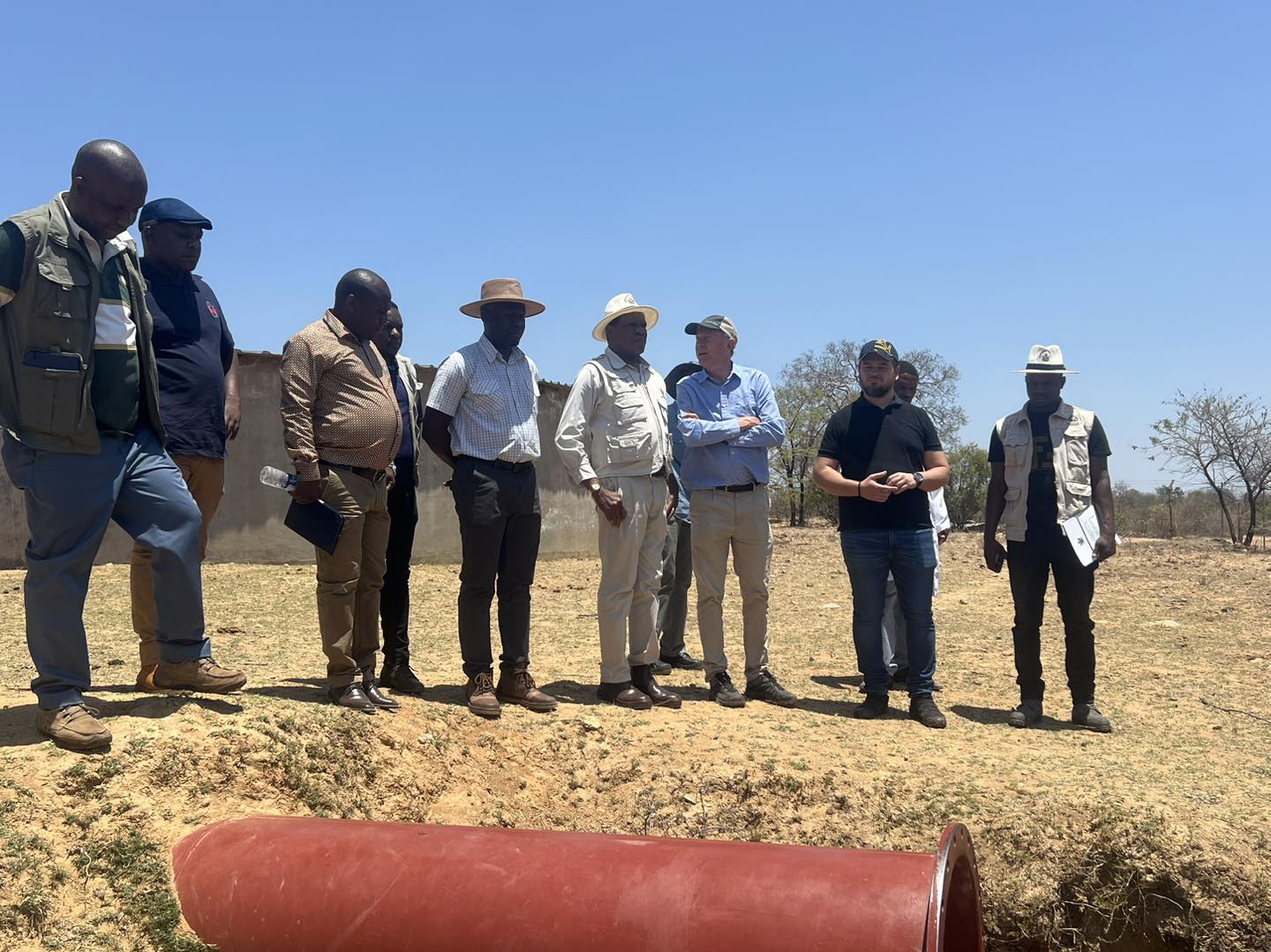Bulawayo Mayor David Coltart has announced that the Minister of Lands, Agriculture, Water, Climate, and Rural Resettlement has committed to fast-tracking the release of funds from the Treasury and waiving Procurement Regulatory Authority of Zimbabwe (PRAZ) procedures to address the city’s worsening water crisis.
Bulawayo residents are enduring water-shedding schedules of up to 130 hours, with some facing even longer periods due to power cuts and other disruptions.
Coltart’s comments came after he and the Minister of Water, Dr. Anxious Masuka, inspected three key dams—Mtshabezi, Umzingwane, and Insiza—that supply water to the city.
“On Friday, I inspected the Mtshabezi Dam pump station, Umzingwane Dam pump station, and Insiza Dam with the Minister of Water, Dr Anxious Masuka. The key issues that emerged are as follows: Although Mtshabezi Dam is over 50 percent full, its pipeline to the Umzingwane Dam pump station can only deliver a maximum of 17 megaliters per day, far below Bulawayo’s daily requirement of 165 megaliters.”
He explained that the 17 megaliter capacity assumes continuous 24-hour pumping, seven days a week. However, due to frequent power cuts, the pumps operate at only about 75 percent capacity, reducing the actual volume to around 13 megaliters per day.
Additionally, much of the pipeline between Mtshabezi Dam and Ncema is gravity-fed, meaning that the 13 megaliters initially pumped drops to just nine megaliters by the time it reaches Ncema.
Coltart noted that while Mtshabezi Dam holds a significant amount of water, the city is only receiving a small portion of it due to these limitations.
He highlighted two critical actions needed to improve supply: completing the upgrade of the pumps at Umzingwane pump station, which is expected within two weeks, and diverting a portion of the pipeline from Mtshabezi to the Umzingwane pump station to facilitate more efficient pumping.
“We have been unable to construct the diversion due to delays in receiving funding from the government, which was promised in April but has not yet been disbursed, and delays in procurement processes. I am grateful that Dr. Masuka committed to addressing both issues—namely, the release of the necessary funds from the Treasury and waiving the PRAZ procedures due to the urgency of the situation.”
“He also committed to advocating for the installation of a solar system at Mtshabezi pump station to increase the number of pumping hours. With this, we hope to reach the full design capacity of 17 megaliters per day. Increasing capacity beyond this would require constructing a duplicate pipeline, which is costly and not feasible for the immediate crisis,” said Coltart.
Regarding Insiza Dam, Coltart revealed that it is currently at 38 percent capacity but losing water rapidly due to evaporation.
“Its pipeline to Ncema is designed to deliver 55 megaliters per day, but technical issues have reduced this to about 46 megaliters per day. Our engineers advised that clearing siltation along this gravity-fed pipeline and taking measures to increase water pressure could restore its original capacity. This work, too, has been delayed due to the lack of government funds promised in April. Again, I am thankful to Dr. Masuka for his commitment to push for urgent funding and to waive PRAZ procedures for a quicker resolution.”
Coltart also provided an update on the Nyamandlovu aquifer, which has a design capacity of 20 megaliters per day.
“The aquifer’s design capacity is 20 megaliters per day, but it has been operating below this due to the theft of pumps and switchgear. However, the situation has improved, and we are now receiving around 15 megaliters per day. As previously reported, Umzingwane and Upper Ncema dams have been decommissioned, and Lower Ncema will follow shortly.”
He warned of a dire situation if Inyankuni Dam, currently at 18 percent capacity, runs dry.
“If Inyankuni dries up, we will only have the current 9 megaliters from Mtshabezi, 45 from Insiza, and 15 from Nyamandlovu—a total of around 60 megaliters, far below our daily requirement of 165 megaliters. This illustrates the severity of our water crisis and the urgent need for upgrades and rehabilitation of the Mtshabezi and Insiza pipelines,” he said.
Coltart expressed hope that Dr. Masuka’s commitment would lead to prompt government action in the coming days and weeks.
The mayor also urged the government to approve the construction of the Glassblock Bopoma Dam, which would provide an additional 70 megaliters of water per day.
“I also took the opportunity to request that all necessary government approvals be granted urgently for the construction of the Glassblock Bopoma Dam, which would add an extra 70 megaliters of water per day to Bulawayo’s supply. Although it will take two years to build the dam and its 32-kilometer pipeline to Ncema, starting work immediately is crucial to avoid a similar crisis in the future.”
“When completed, the Glassblock Bopoma Dam will ensure Bulawayo’s water security until 2040, giving the government time to finish the Gwaai-Shangani Dam, which is only 55 percent complete, and its 257-kilometer pipeline to Bulawayo. This project will cost a further US$800 million to complete, compared to US$126 million for building the Glassblock Bopoma Dam and its pipeline,” he said.


Leave a comment